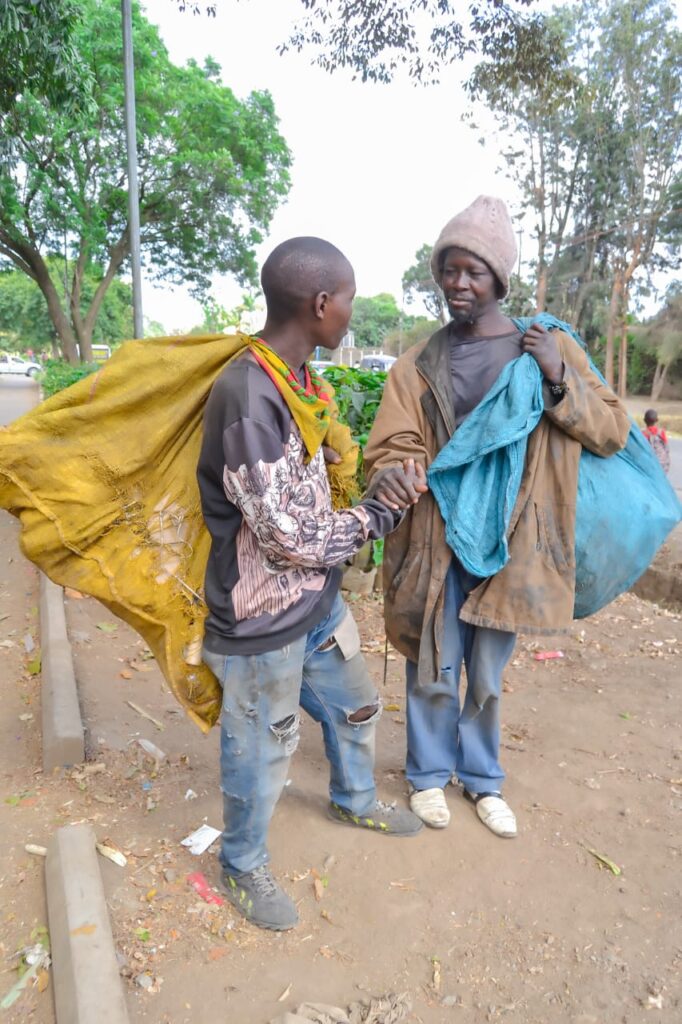Urban Homelessness
Urban homelessness in Kenya is a complex issue, intricately linked to the lives of street children who brave the urban landscape without stable homes or support systems. Understanding the breadth, causes, and potential solutions to this problem is essential for meaningful action.
Scope of Urban Homelessness in Kenya
Quantifying the exact number of homeless individuals and street children in Kenya is difficult due to their transient nature. A 2007 study by the Consortium of Street Children estimated between 250,000 and 300,000 children living and working on the streets across the country, with over 60,000 in Nairobi alone. The 2019 national census, however, reported 46,639 Kenyans living on the streets, 56% of whom are children under five without knowledge of their parents’ whereabouts. This discrepancy underscores the challenges in obtaining accurate data, suggesting that the real figures may be underreported.
Causes of Urban Homelessness in Kenya
- Poverty: With over 16 million Kenyans living below the poverty line, many families send children to cities for work, often resulting in homelessness due to exploitative conditions.
- Family Breakdown: Domestic issues and the HIV/AIDS epidemic, which has orphaned over 1.1 million children, force many kids to fend for themselves.
- Rural-Urban Migration: Seeking better opportunities, families move to cities only to face overcrowding and inadequate housing, pushing children to the streets.
- Child Labor and Exploitation: Economic pressures lead children into exploitative work, with girls particularly vulnerable to sexual exploitation.
- Lack of Access to Education: Hidden costs of education prevent many children from attending school, perpetuating cycles of poverty and homelessness.

Challenges Faced by Street Children
- Substance Abuse: Many street children resort to sniffing substances to cope with hunger and harsh realities, risking severe health issues.
- Health Issues: Poor living conditions and lack of healthcare make them susceptible to diseases like tuberculosis and malaria.
- Exploitation and Abuse: Vulnerable to abuse, street children often face physical, emotional, and sexual exploitation.
- Stigmatization: Viewed as nuisances, street children face discrimination, hindering their access to resources and societal reintegration.
- Lack of Legal Identity: Without birth certificates, many children struggle to access education, healthcare, or legal protection.
Intervention Strategies
- Education and Vocational Training: Providing free, quality education and training equips children for employment.
- Family Reintegration Programs: Reconnecting children with families through counseling and support restores stability.
- Shelter and Rehabilitation Centers: Safe shelters offer basic needs and help children transition back into society.
- Community Awareness Campaigns: Educating the public reduces stigmatization and fosters community support.
- Policy Implementation and Support: Strengthening child protection laws ensures long-term solutions.
- Healthcare Access: Mobile clinics address urgent medical needs and provide mental health support.
Our Approach: Value-Added Agriculture
Mwandani International addresses homelessness by tackling its link to rural-urban migration. Our focus on value-added agriculture aims to strengthen rural economies, creating sustainable opportunities that encourage people to remain in their communities rather than migrate in search of livelihoods.
By promoting sustainable agricultural practices, boosting production, and fostering value-added product development, we enhance productivity and generate diverse job opportunities, ultimately reducing the economic pressures that drive urban migration and homelessness.
Homelessness and the plight of street children in Kenya require comprehensive and compassionate solutions. By addressing root causes and implementing targeted strategies, we can improve lives and work towards eradicating homelessness.
Your support can make a difference. Donate today to help us empower these vulnerable individuals.
References and Additional Reading on Urban Homelessness in Kenya
Children connected to the streets: National society case studies.
Global partnership for education.
Homeless children, child labour, and the onslaught of COVID-19.
Let’s end child labour in Kenya.
Module 3: Prevention and treatment of substance use disorders.
No one should ever be made to make the street their home.
The 2019 violence against children survey.
Unlocking rural areas to curb rural-urban migration among youth in Kenya.
We want a world where street children live with dignity, in safety and security.
